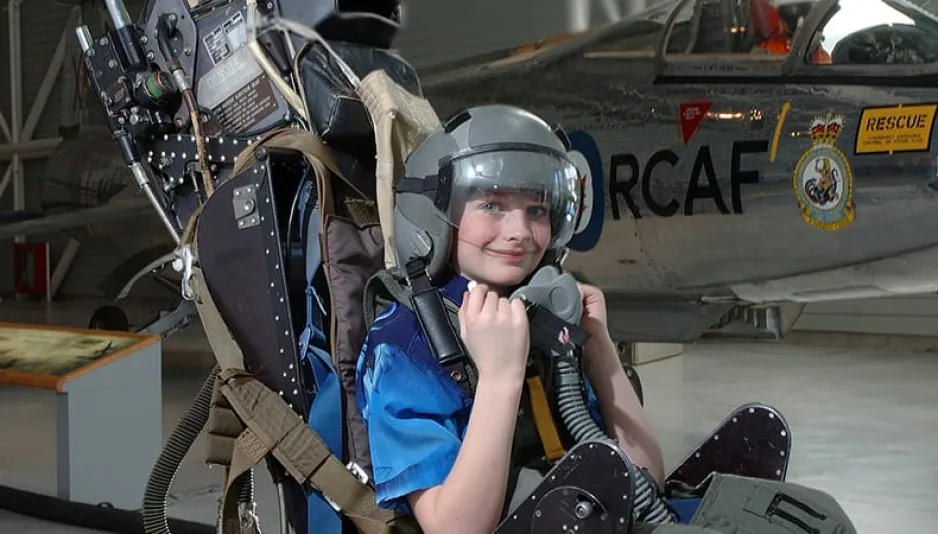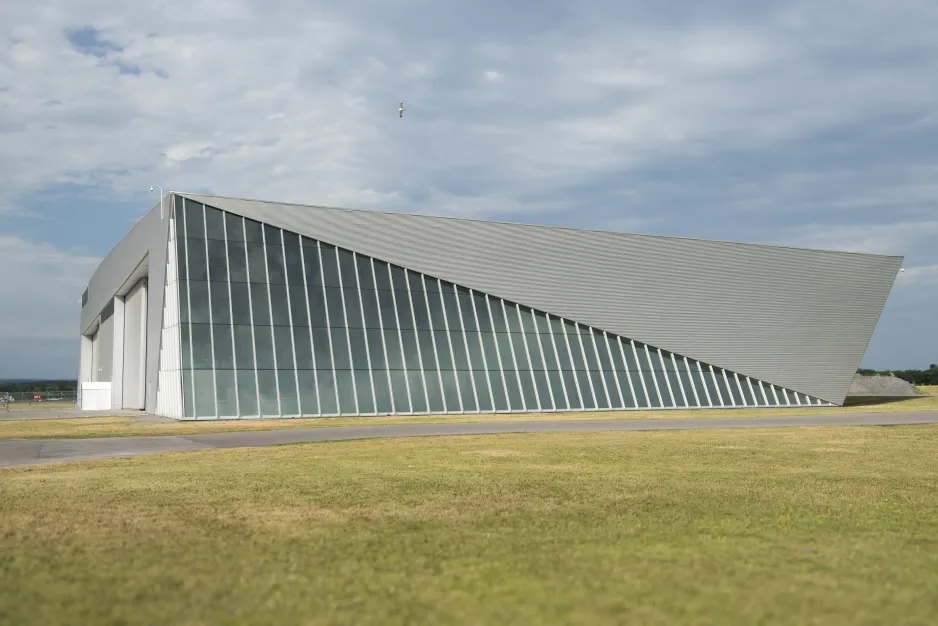About


Located on a former military air base just five kilometers from the Prime Minister’s residence at 24 Sussex Drive in Ottawa, the Canada Aviation and Space Museum focuses on aviation in Canada within an international context – from its beginnings in 1909 to today.
As Canada’s contribution to aviation expanded to include aerospace technology, the museum’s collection and mandate grew to include space flight. The collection itself consists of more than 130 aircraft and artifacts (propellers, engines) from both civil and military service. It gives particular, but not exclusive, reference to Canadian achievements. The most extensive aviation collection in Canada, it is also considered one of the finest aviation museums in the world.
Among the museum’s highlights are the largest surviving pieces of the famous Avro Arrow (its nose section and two wing tips), the original Canadarm used on the Endeavour space shuttle, the Lancaster bomber from the Second World War, and Life in Orbit: The International Space Station exhibition.
As the national repository of Canada’s aeronautical and space heritage, the Canada Aviation and Space Museum is guided in its undertakings by its Mission and Vision statements. Broadly, its mandate is to:
- create a greater appreciation for Canada’s aviation heritage
- demonstrate the vital role of aviation in the lives of Canadians
- illustrate the significance of aviation in the growth and prosperity of this country
MISSION
The Museum invites Canadians of all ages and from all regions to explore the wonders of flight and the contribution of aviation to the transformation and development of Canada. It achieves this by collecting, preserving, depicting, and displaying aeronautical artifacts and interpreting their significance — scientific and technical, social and cultural, historic and economic — to Canada and the world.
VISION
The Museum will:
- maintain and strengthen its place as Canada’s leading aeronautical and aerospace museum and one of the best in the world
- encourage a greater appreciation of Canada’s aviation and aerospace heritage
- highlight the vital role and influence of aviation and aerospace in the lives of Canadians and in the growth and prosperity of their country
- showcase Canada’s place in the history of aviation and aerospace
The Museum will accomplish this by:
- developing and maintaining a representative collection of artifacts and archival material that is significant to Canadian and, in many instances, world aeronautical and aerospace history
- presenting creative and engaging programs that bring aviation history to life and stimulate a lasting interest in the fascinating world of flight
- disseminating accurate, relevant information about all aspects of the Museum and the wider world of aeronautics to the broadest possible range of audiences through electronic and other forms of media
- providing an informative, enjoyable visitor experience that meets both actual and anticipated needs
- conducting authoritative historical research in the field of aeronautics from a primarily Canadian perspective and supporting independent historical research by providing access to research resources
- encouraging greater awareness of Canada’s rich aviation heritage by participating in networks of museums and co-operating with other organizations interested in aeronautical heritage at the local, national, and international level
- presenting the highest calibre of temporary and permanent exhibitions that communicate various aspects of the aviation story and complement the Museum’s artifacts
The Canada Aviation and Space Museum first opened in 1960 at Uplands Airport in Ottawa. At that time, it presented only one of the three major aeronautical collections held by the Canadian government:
- The National Aviation Museum collection focused on bush flying and early aircraft manufacturers in Canada. (This was the collection displayed at Uplands.)
- The Canadian War Museum’s collection concentrated on military aircraft from the First World War to the 1950s.
- The Royal Canadian Air Force (RCAF) collection emphasized military aircraft related to RCAF history.
In 1964, these three collections were combined into the National Aeronautical Collection. The amalgamated collection was housed in Second World War era hangars at Ottawa’s historic Rockcliffe Airport. This arrangement gave visitors a better perspective on the development and use of aircraft in Canada over the years. It proved to be tremendously popular.
The Museum joined with the National Museum of Science and Technology in 1967. The National Aeronautical Collection continued to acquire both military and civil aircraft important to Canadian and world aviation history. The collection was officially renamed the National Aviation Museum in 1982.
In 1988, the current Museum display building opened. Two years later, in 1990, the National Museum of Science and Technology Corporation was incorporated, which now operates as Ingenium: Canada’s Science and Innovation Museums. It included the National Aviation Museum and the National Museum of Science and Technology. The latter had by then become the Canada Science and Technology Museum. In 2000, the National Aviation Museum became the Canada Aviation Museum.
In 2005, the Museum building was supplemented by the Reserve Hangar. In 2010, when the Museum’s mandate grew to include aerospace technology, its name was officially changed to the Canada Aviation and Space Museum.

Reserve Hangar
The Reserve Hangar at the Museum helps showcase the collection and symbolizes the power and grace of flight.

